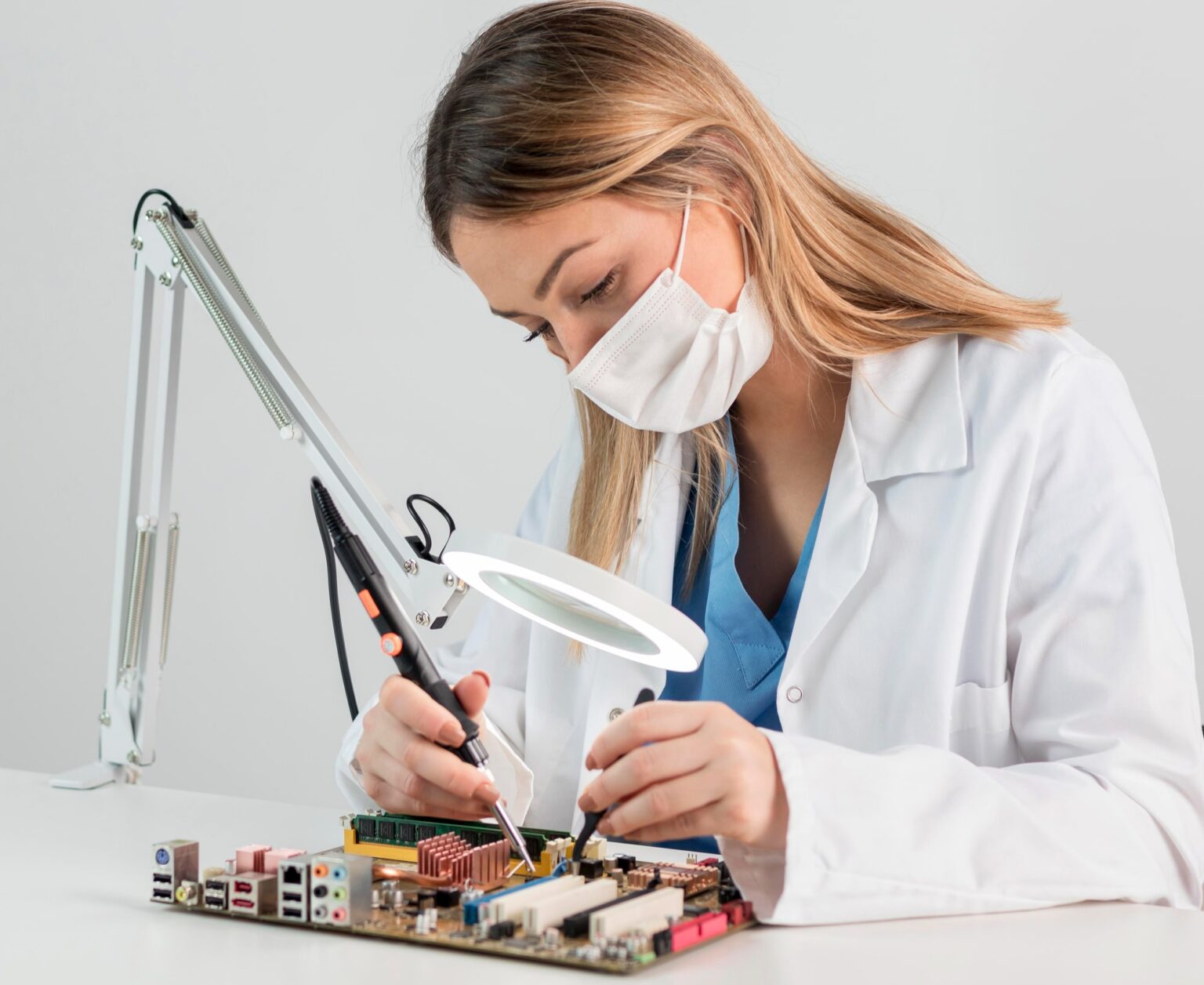Medical implants and bioelectronics represent the integration of technology with biology to develop advanced devices that interface with the human body for therapeutic and diagnostic purposes. These technologies have revolutionized medical treatments, enabling precise interventions, improved functionality, and enhanced patient outcomes. They encompass a wide range of devices, including implants, prosthetics, neurostimulators, and biosensors.
Here are key aspects of medical implants and bioelectronics:
- Implantable Medical Devices: Implantable medical devices are designed to be placed inside the body to replace or support the function of a particular organ or tissue. Examples include pacemakers for regulating heart rhythm, cochlear implants for hearing restoration, artificial joints, and artificial organs like artificial hearts or kidneys. These devices are often made from biocompatible materials and can have a significant positive impact on the quality of life for patients with various medical conditions.
- Prosthetics: Prosthetic devices are artificial replacements for missing body parts, typically limbs. With advancements in materials, robotics, and bioengineering, prosthetics have become more sophisticated, providing improved mobility, dexterity, and sensory feedback. Advanced prosthetics can be controlled using neural interfaces, allowing users to perform complex movements and regain a sense of touch.
- Neurostimulation: Neurostimulation involves the use of implanted devices to modulate or stimulate the nervous system for therapeutic purposes. Deep brain stimulation (DBS) is a widely used technique for treating neurological disorders such as Parkinson’s disease, essential tremor, and dystonia. Spinal cord stimulation (SCS) is used to alleviate chronic pain by delivering electrical impulses to the spinal cord. Additionally, neurostimulation techniques are being explored for applications in psychiatric disorders, epilepsy, and spinal cord injuries.
- Bioelectronic Sensors: Bioelectronic sensors are devices that can detect and monitor biological signals or analytes in the body. They are used for various diagnostic and monitoring purposes, such as glucose monitoring for diabetes management, continuous monitoring of vital signs, and detection of biomarkers for disease diagnosis. These sensors can be implanted or wearable, and they enable real-time data collection, allowing for early detection of health conditions and personalized treatment.
- Neural Interfaces and Brain-Computer Interfaces (BCIs): Neural interfaces establish a direct communication link between the brain or nervous system and external devices. BCIs, a type of neural interface, enable individuals to control external devices or interact with computer systems using their brain signals. BCIs hold promise for assisting individuals with paralysis or limb loss to regain mobility and perform tasks using robotic prosthetics or assistive devices.
- Tissue Engineering and Regenerative Medicine: The field of tissue engineering utilizes bioengineered materials and cells to create functional replacement tissues or organs. This approach aims to restore tissue function and promote regeneration, reducing the need for traditional implants. Bioelectronics can be integrated with tissue engineering techniques to create “smart” implants that facilitate tissue regeneration and provide real-time monitoring of healing processes.
- Wireless Connectivity and Power: Advancements in wireless technology enable the development of implantable devices that can communicate wirelessly with external systems, such as healthcare providers or monitoring devices. Wireless power transfer techniques, such as inductive charging, eliminate the need for battery replacement in implantable devices, enhancing patient convenience and reducing the risk of complications.
The convergence of technology and biology in medical implants and bioelectronics has opened up new frontiers in healthcare, improving patient outcomes, quality of life, and personalized treatment options. Continued advancements in materials, miniaturization, energy efficiency, and data processing will drive further innovations in this field, paving the way for more sophisticated and integrated devices that seamlessly interface with the human body.



